In the figure shown, acceleration of 1 is x (upwards). Acceleration of pulley P3, w.r.t. pulley P2 is y (downwards) and acceleration of 4 w.r.t. to pulley P3 is z (upwards). Taking upward +ve and downward -ve then
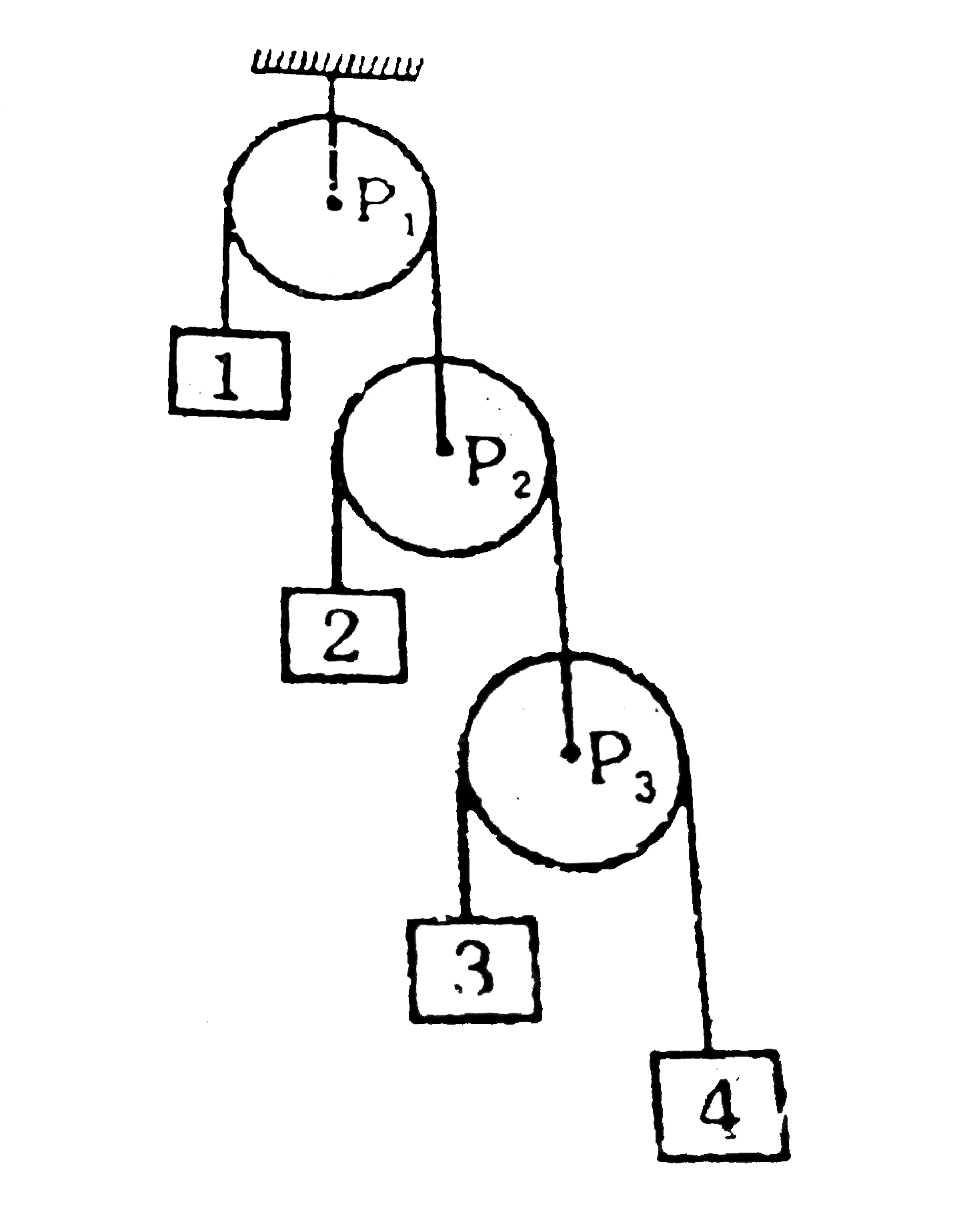
Column IColumn II(A)Absolute acceleration of 2(p)(y−x)downwards(B)Absolute acceleration of 3(q)(z−x−y)upwards(C)Absolute acceleration of 4(r)(x+y+z)downwards(s)None
The correct Answer is:(A)-s, (B)-r, (C)-q
Step by step video, text & image solution for In the figure shown, acceleration of 1 is x (upwards). Acceleration of pulley P_(3), w.r.t. pulley P_(2) is y (downwards) and acceleration of 4 w.r.t. to pulley P_(3) is z (upwards). Taking upward +ve and downward -ve then {:(,"Column I",,,"Column II"),((A),"Absolute acceleration of 2",,(p),(y-x) "downwards"),((B),"Absolute acceleration of 3",,(q),(z-x-y) "upwards"),((C),"Absolute acceleration of 4",,(r),(x+y+z) "downwards"),(,,,(s),"None"):} by Physics experts to help you in doubts & scoring excellent marks in Class 11 exams.
Topper's Solved these Questions
- BOOK - ALLENCHAPTER - KINEMATICSEXERCISE - Assertion-Reason20videos
KINEMATICS
- BOOK - ALLENCHAPTER - KINEMATICSEXERCISE - Comprehension#13videos
KINEMATICS
- BOOK - ALLENCHAPTER - KINEMATICSEXERCISE - EXERCISE-0257videos
KINEMATICS
- BOOK - ALLENCHAPTER - ERROR AND MEASUREMENTEXERCISE - Part-2(Exercise-2)(B)22videos
ERROR AND MEASUREMENT
- BOOK - ALLENCHAPTER - KINEMATICS (MOTION ALONG A STRAIGHT LINE AND MOTION IN A PLANE)EXERCISE - BEGINNER S BOX-78videos
KINEMATICS (MOTION ALONG A STRAIGHT LINE AND MOTION IN A PLANE)
Similar Questions
Statement-I : A projectile is thrown with an initial velocity of (aˆi+bˆj)m/s. If range of projectile is maximum then a=b.
Statement-II : In projectile motion, angle of projection is equal to 45∘ for maximum range condition.10:41View SolutionDistance is a scalar quantity. Displacement is a vector quqntity. The magnitude of displacement is always less than or equal to distance. For a moving body displacement can be zero but distance cannot be zero. Same concept is applicable regarding velocity and speed. Acceleration is the rate of change of velocity. If acceleration is constant, then equations of kinematics are applicable for one dimensional motion under the gravity in which air resistance is considered, then the value of acceleration depends on the density of medium. Each motion is measured with respect of frame of reference. Relative velocity may be greater/ smaller to the individual velocities.
A particle moves from A to B. Then the ratio of distance to displacement is :-
 03:49View Solution
03:49View SolutionA particle is moving in a plane with velocity given by →u=u0ˆi+(aωcosωt)ˆj, where ˆi and ˆj are unit vectors along x and y axes respectively. If particle is at the origin at t=0. Calculate the trajectory of the particle :-
02:11View SolutionA cube has a side of length 1.2×10−2m. Calculate its volume.
03:11View SolutionA football player kicks a ball at ball at an angle of 300 with the horizontal with an initial speed of 20m/s. Assuming that the ball travels in a vertical plance, calculate (a) the time at which the ball reaches the highest point (b) maximum height reached (c ) the horizrontal range of the ball (d) the time for wich the ball is in air. g=10m/s2.
01:02View SolutionIn the arrangement shown in fig., all pulleys are smooth and massless. When the system is released from the rest, acceleration of block 2 and 3 relative to 1 are 1ms−2 downwards and 5ms−2 downwards, respectively. Acceleration of block 3 relative to 4 is zero.
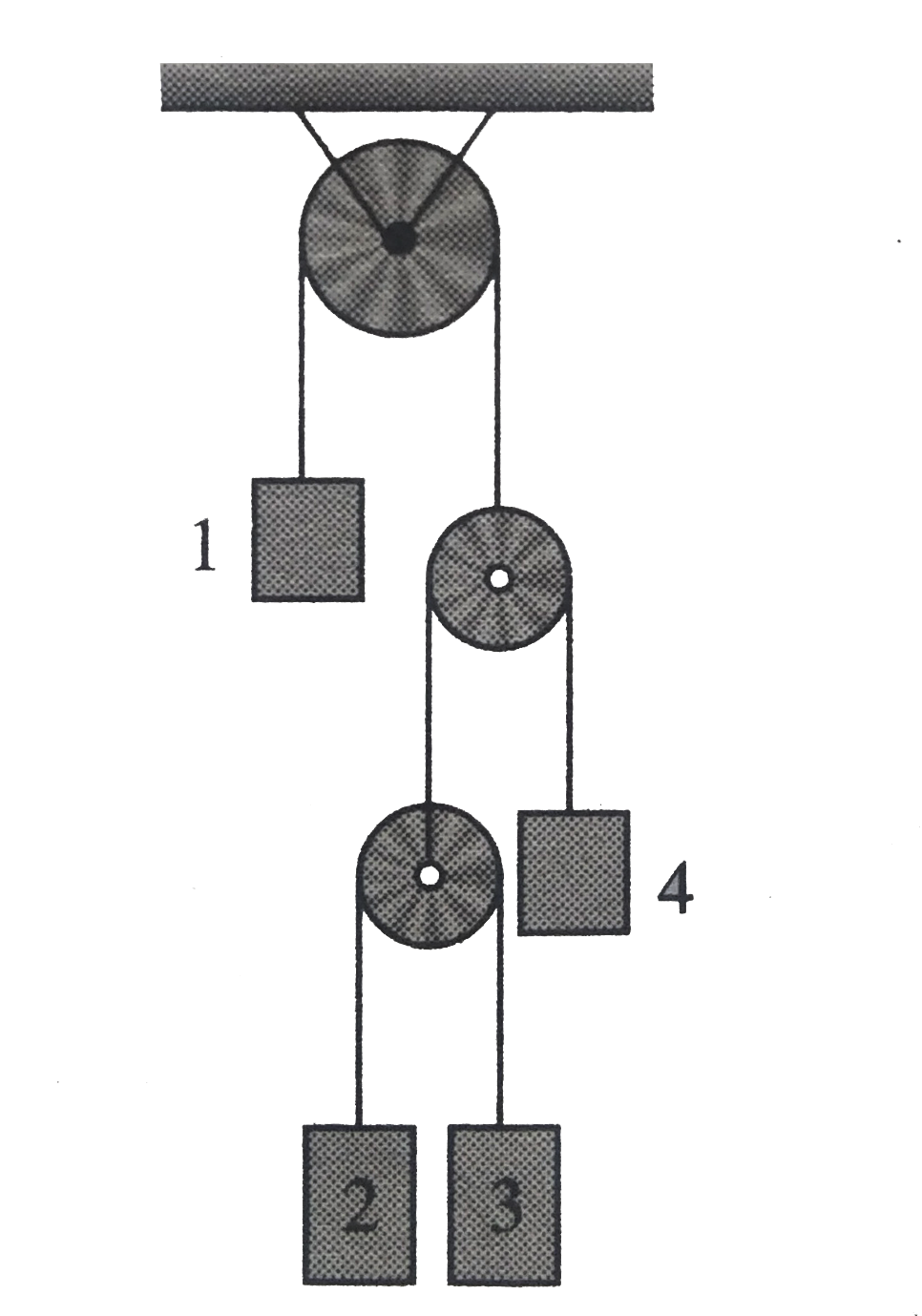
Find the absolute acceleration of block 1.04:41View SolutionIn the figure acceleration of A is 1m/s2 upward, acceleration of B is 7m/s2 upward acceleration of C is 2m/s2 upward. The acceleration of D will be.
 02:03View Solution
02:03View SolutionThe pulley in the diagram are all smooth and light. The acceleration of A is a upwards and the acce,leration of C is f downwards. The acceleration of B is
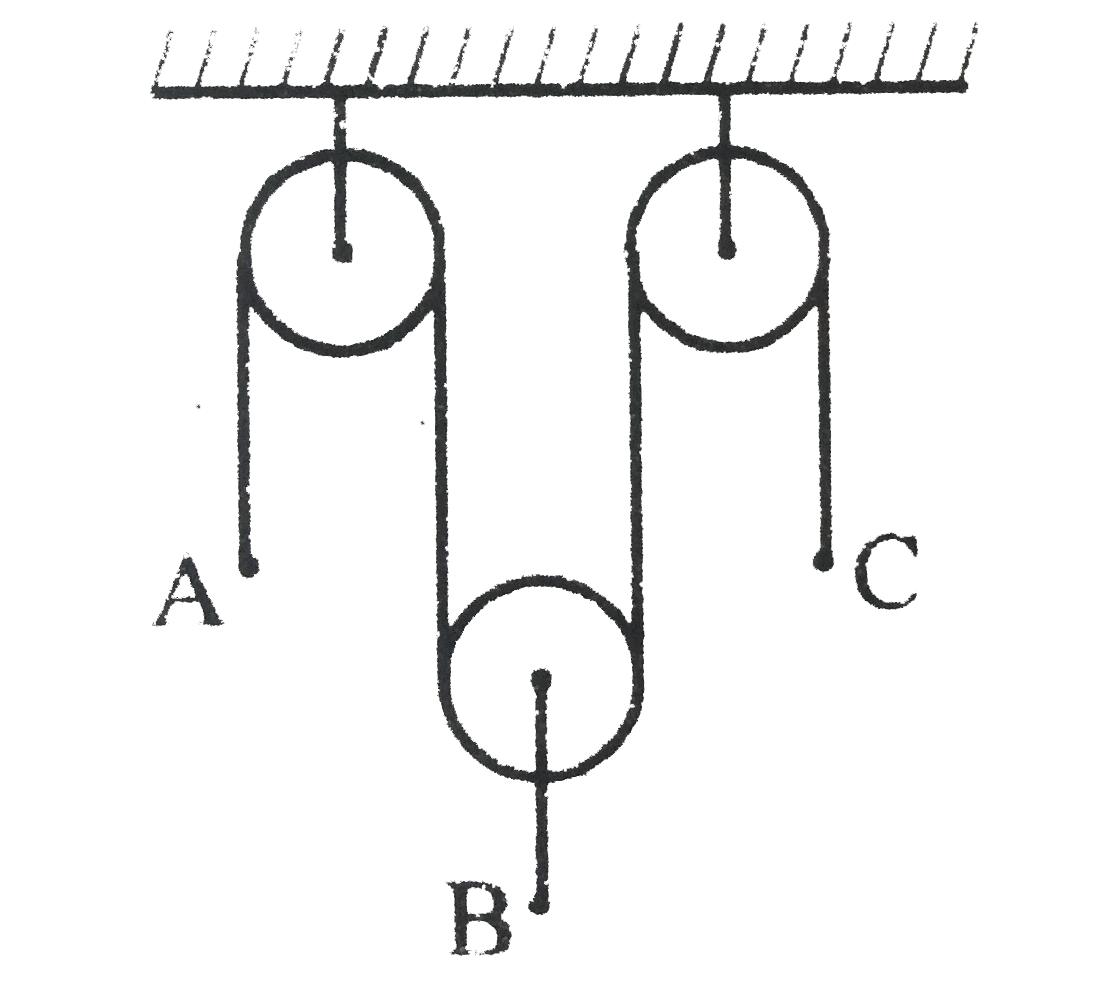 02:04View Solution
02:04View SolutionIf acceleration of block B is 4m/s2 upward & that of C is 6m/s2 downward. Find acceleration of A :−
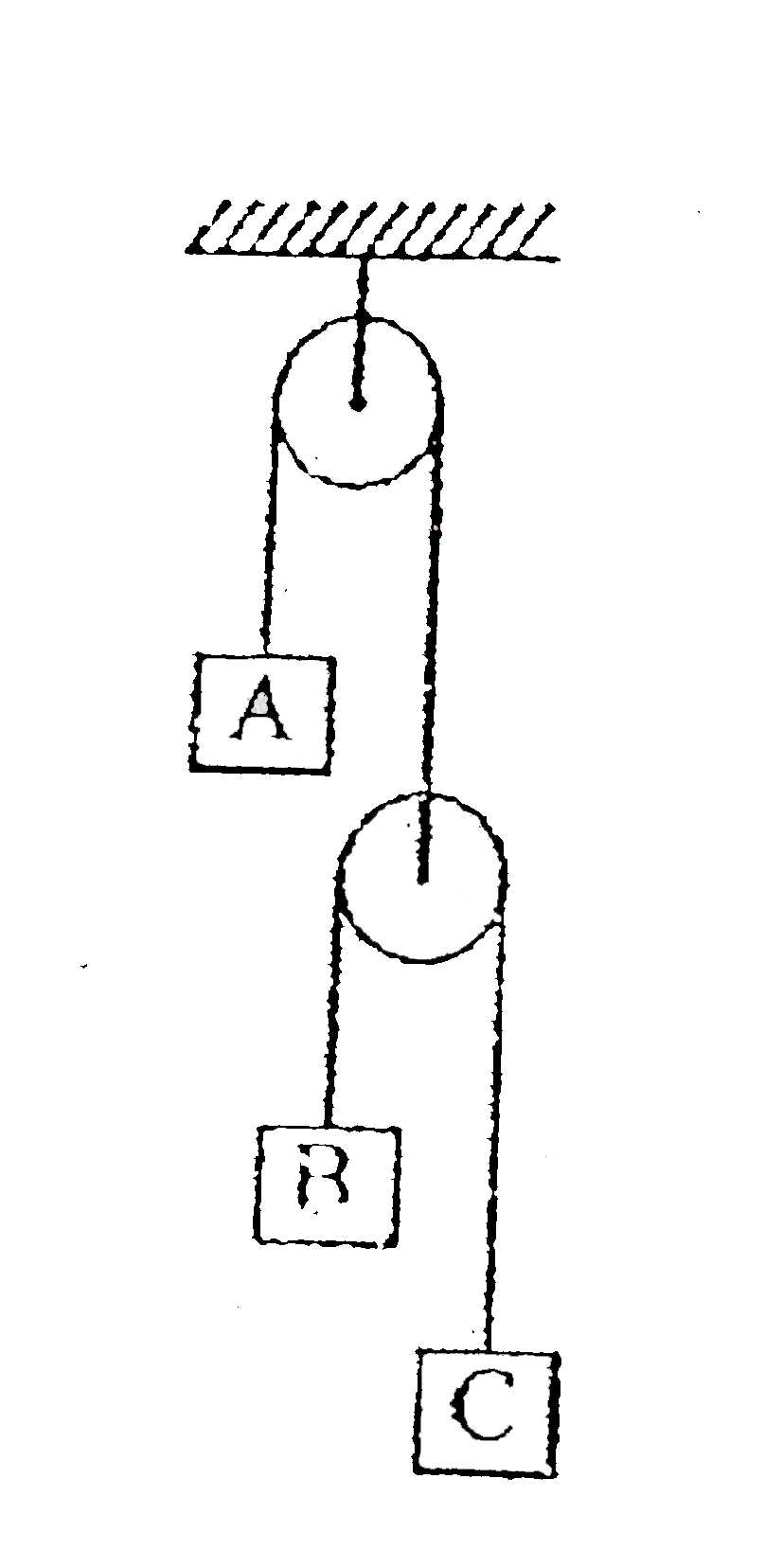 05:46View Solution
05:46View SolutionAcceleration due to gravity is always downwards. How will you write it vectorially if +Y is
(a) downwards, (b) upwards.03:58View SolutionIn the figure shown ,acceraltion of is x (upwards ) Acceleration o fpulleys p3 with respect to pulley p2 is y (downwards) and accelarataion of f4 wioth respect to pul,ley p3 is z (upwards). Then match the following
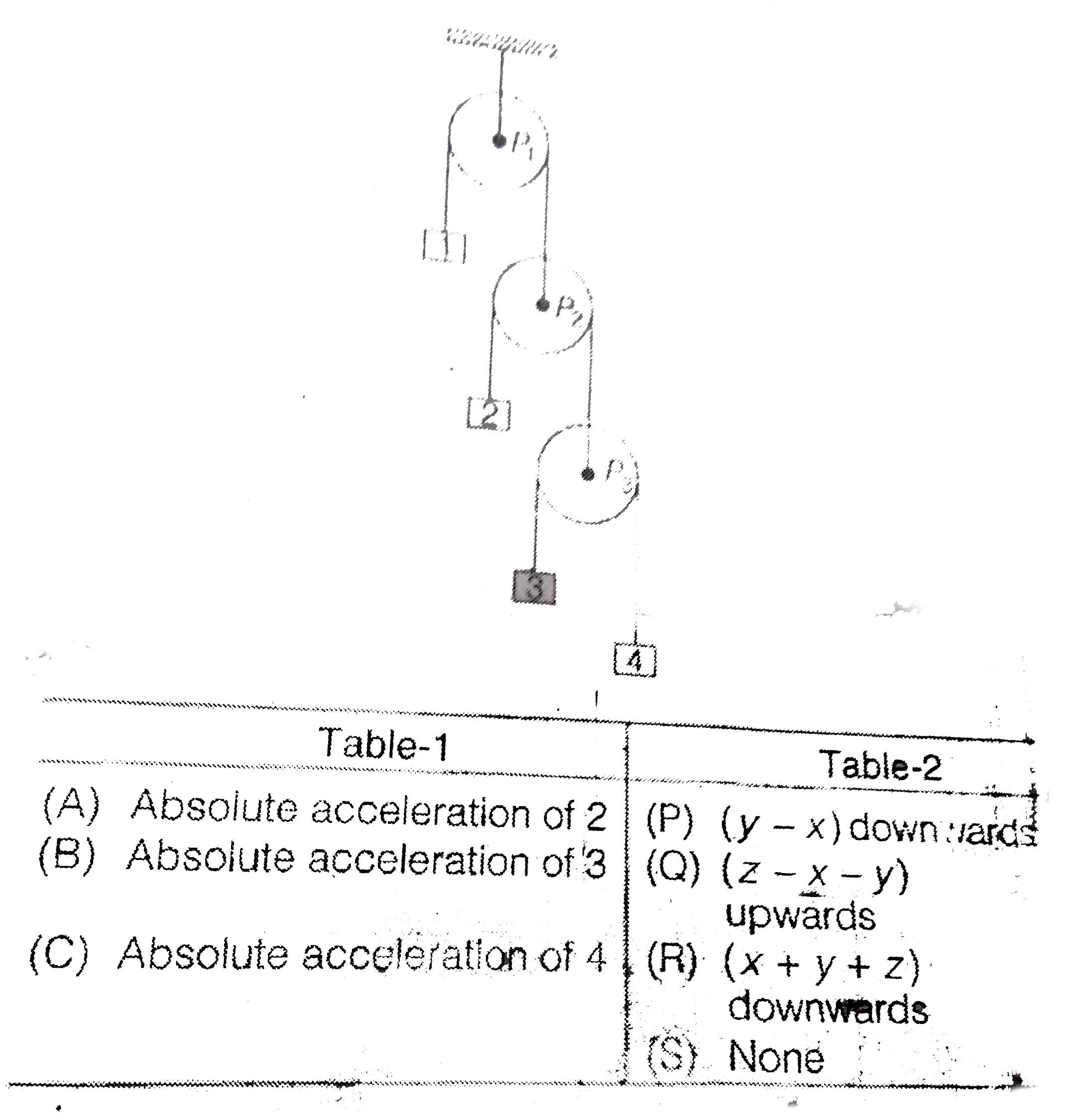 02:37View Solution
02:37View SolutionA cylindrical tank contains water up to a height H. If the tank is accelerated upwards with acceleration a, the pressure at the A is p_(1) . If the tank is accelerated downwards with acceleration a the pressure at A is p_(2) . Then
06:07View SolutionAt a certain moment of time, acceleration of the block A is 2 m/s2 . Upward and acceleration of block B is 3 m/s2 upward. The acceleration of block C is ( masses of pulleys and string are negligible )
 03:07View Solution
03:07View Solutionचित्र में दी गयी सभी घिरनियां चिकनी तथा हल्की है। A का उपर की ओर त्वरण a है तथा C का त्वरण नीचे की ओर f है| B का त्वरण होगा।
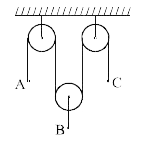 02:44View Solution
02:44View SolutionIn the figure shown,a3=6m/s2 (downwards) and a2=4m/s2 (upwards) .Find acceleration of 1
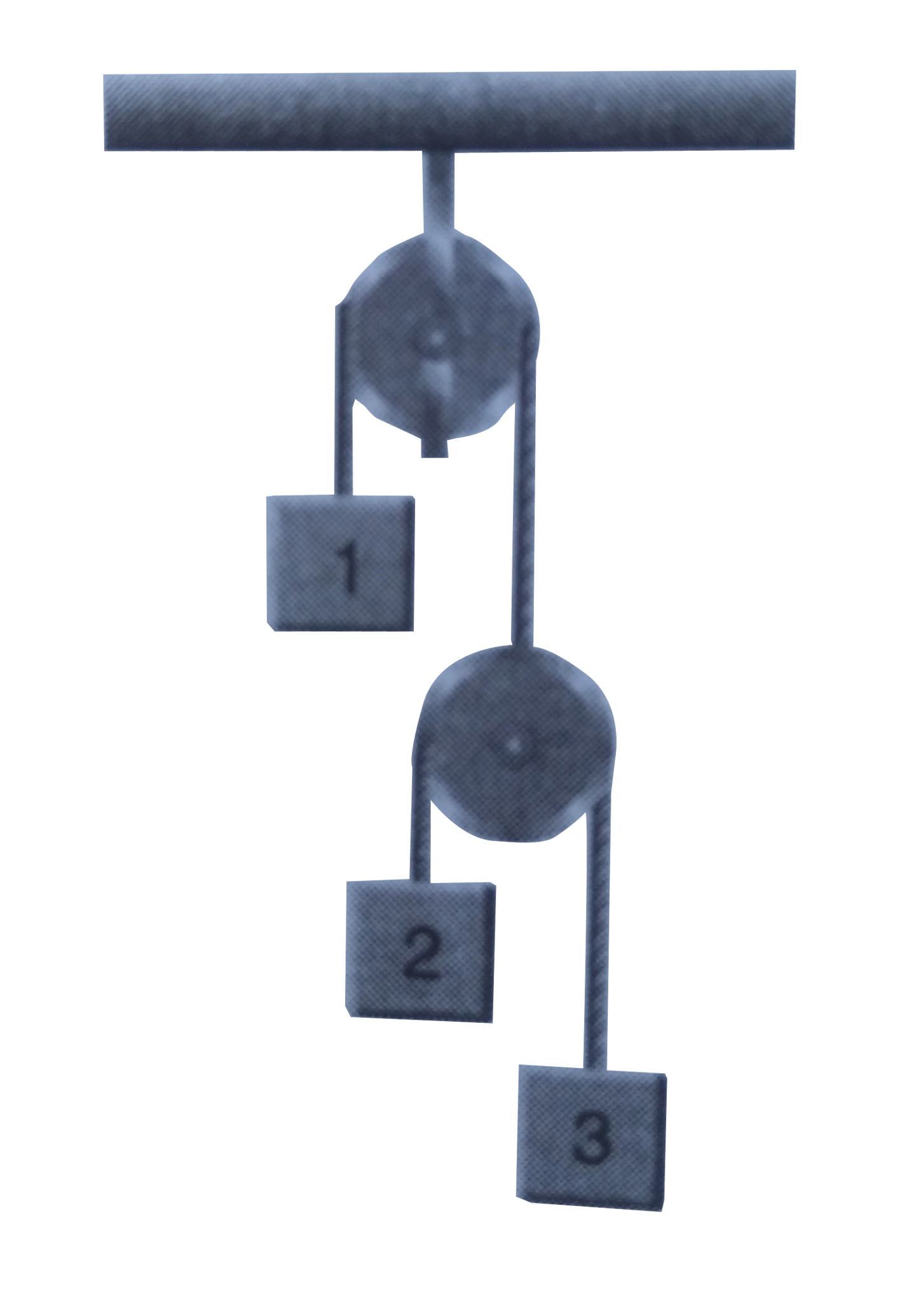 02:50View Solution
02:50View Solution

